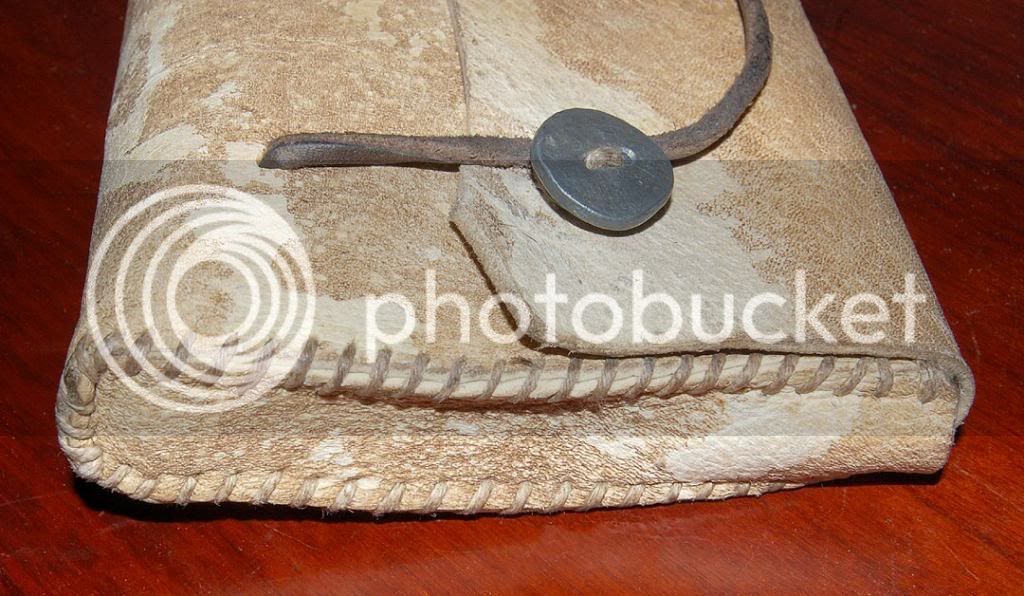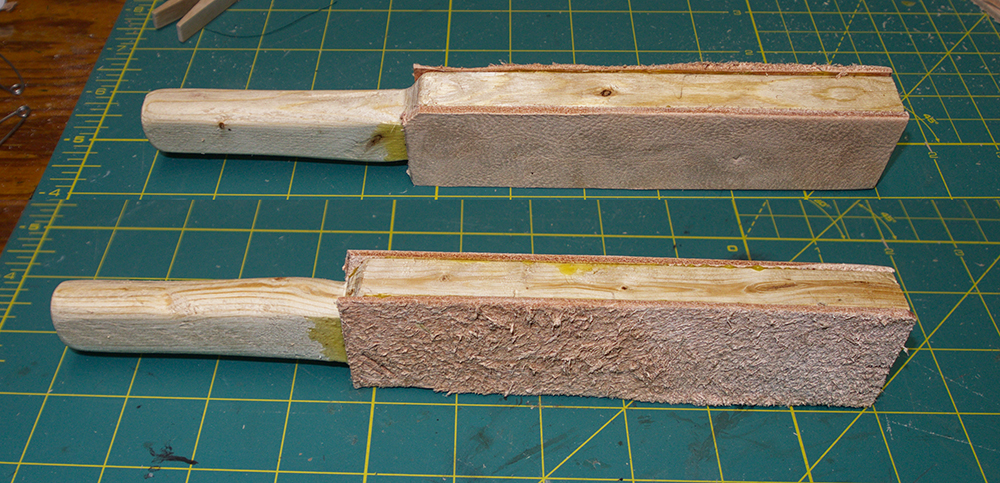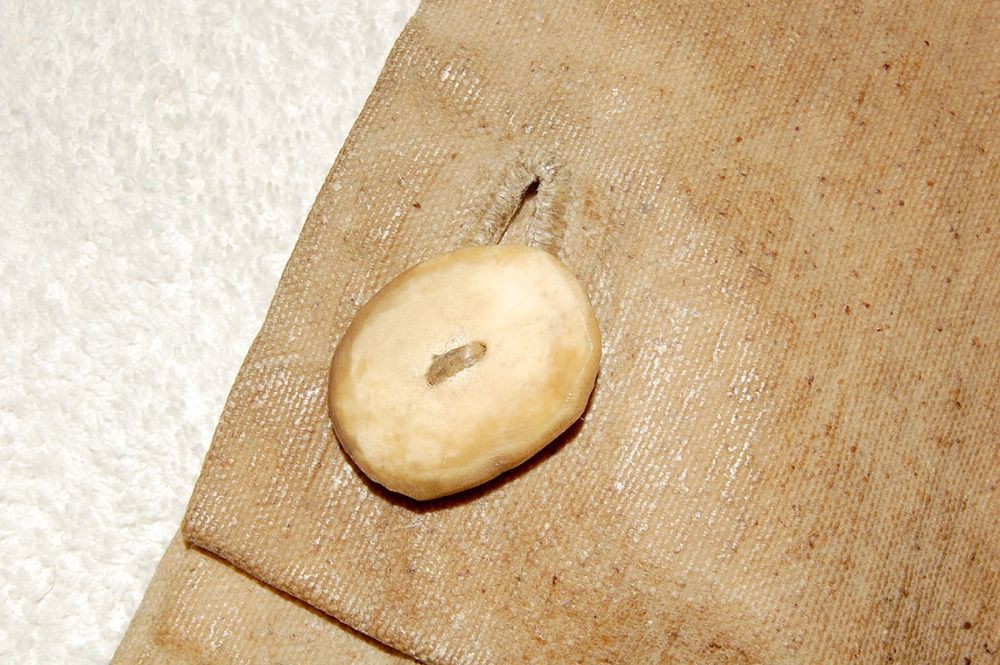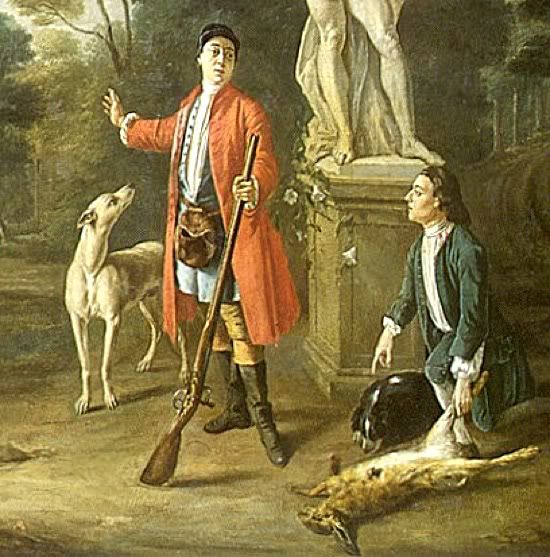You are using an out of date browser. It may not display this or other websites correctly.
You should upgrade or use an alternative browser.
You should upgrade or use an alternative browser.
Belt Pouch
- Thread starter NeilMacleod
- Start date

Help Support Muzzleloading Forum:
This site may earn a commission from merchant affiliate
links, including eBay, Amazon, and others.
- Joined
- May 6, 2014
- Messages
- 17,473
- Reaction score
- 16,550
Good point. You used antler material that was solid with no pith in it. Nice button, BTW.
Gus
Gus
- Joined
- May 6, 2014
- Messages
- 17,473
- Reaction score
- 16,550
For less experienced forum members, one has to be careful about washing items with antler, bone or wood buttons; if one uses a washing machine and dryer. That's a good way to chip/crack/destroy these buttons. No problem when hand washing the items, though, as long as one is careful around these types of buttons.
Gus
Gus
Yes, should have clarified that point a bit better. The vast majority of individuals using antler are unaware of the potential issues with the soft core. Hack a piece off, sew it on, done... It's in the details of knowing what is good stock and what is not. :thumbsup:
Black Hand
Cannon
- Joined
- Mar 17, 2005
- Messages
- 9,348
- Reaction score
- 897
If antler is used to make buttons as bone was used, where only the solid "outside" was employed, then it is nearly indistinguishable from bone buttons. However, too many times have I seen the antler cross-section buttons with the pith core used, and this was just not done in the period (not counting the Ronnyvoooooo (misspelling intentional) period from 1960 onward).
See images here https://www.bing.com/images/search?q=diderot+button+makers&FORM=HDRSC2 for period button-making tools.
See images here https://www.bing.com/images/search?q=diderot+button+makers&FORM=HDRSC2 for period button-making tools.
Last edited by a moderator:
- Joined
- Jan 3, 2004
- Messages
- 14,767
- Reaction score
- 320
For me, antler comes into its own in bigger pieces- handles for range rods or short starters, and especially the tips for powder measures.
The measures can be an art form unto themselves. I've sure seen some beauties here on the site. I'm putting together a kit right now for my new GRRW CA Leman Squirrel Rifle, and center stage will be an antler powder measure.
The measures can be an art form unto themselves. I've sure seen some beauties here on the site. I'm putting together a kit right now for my new GRRW CA Leman Squirrel Rifle, and center stage will be an antler powder measure.
Not commercially, at least, but can you be sure they were never used as a make-do expedient? They certainly were readily available and cheap. Work well, too.
What about lead buttons? I have an item mentioning those from 1736. I would assume they were molded buttons, but what about making them out of a flattened roundball? They look pretty ordinary.

Spence
What about lead buttons? I have an item mentioning those from 1736. I would assume they were molded buttons, but what about making them out of a flattened roundball? They look pretty ordinary.

Spence
Black Hand
Cannon
- Joined
- Mar 17, 2005
- Messages
- 9,348
- Reaction score
- 897
Considering the availability of tools in the field, a toggle would be far easier and faster, but not as easy as a simple leather tie or even ignoring the missing button altogether. Antler isn't all that easy to cut - even wood would be easier and faster.Spence10 said:Not commercially, at least, but can you be sure they were never used as a make-do expedient? They certainly were readily available and cheap. Work well, too.
As to the lead ball - easy, yes. However, when ones life could depend on a single bullet, might not be a first choice either.
- Joined
- Jan 3, 2004
- Messages
- 14,767
- Reaction score
- 320
Spence10 said:...but what about making them out of a flattened roundball?
I can certainly believe it. But my vision is colored by early life on the Southwest border. We had "guest workers" who crossed every year to work on our ranch and about everyone else's. They'd arrive out of the mesquite and greasewood riding their own horses. Pretty hard scrabble folks who "made do" with about everything, making it themselves rather than buying. A whole lot of "frontier spirit" in those folks from what I saw.
Only reason I bring it up, I don't recall a single saddle bag latched with a buckle or snap. All they used was a hunk of mesquite branch pushed through a leather loop. Seems reasonable that a mashed round ball would be a pretty good make-do.
You bet, I certainly do not condone antler use in any way. The methods in which it's used though need be considered.
I love antler for blade handles and other various adornments as well, good judgment just needs to be exercised when it comes to the exposed inner surfaces.
Never thought of making a lead button from a roundball... Exceptional idea Spence, one learns again! Love it.
I love antler for blade handles and other various adornments as well, good judgment just needs to be exercised when it comes to the exposed inner surfaces.
Never thought of making a lead button from a roundball... Exceptional idea Spence, one learns again! Love it.
Good one, Black Hand, inventive, ingenious, not an impossible logical stretch and with a touch of humor....I like it.Black Hand said:As to the lead ball - easy, yes. However, when ones life could depend on a single bullet, might not be a first choice either.
Of course, truth be told, one could cut the lead buttons off his belt pouch, chew them round and shoot two savages, if he kept his wits about him and wasted no time.
If he had teeth.
Spence
Black Hand
Cannon
- Joined
- Mar 17, 2005
- Messages
- 9,348
- Reaction score
- 897
:rotf: :rotf: :rotf: :rotf:Spence10 said:Of course, truth be told, one could cut the lead buttons off his belt pouch, chew them round and shoot two savages, if he kept his wits about him and wasted no time.
If he had teeth.
Spence
BrownBear said:Dragonsfire said:Been looking for while jewelers polish but not successful yet, by the way the Awl is very sharp, not nice to stab fingers lol Its more do with my hands being a bit arthritic.
Tandy sells it, calling it Polishing compound. I use the green, red and white in succession (after shaping with a file and sanding with a succession of sandpaper grits, finishing with 2000) before I ever get around to the polishing.
Apply them to a leather strop such as this one from Tandy or make your own.
Made a two sided strop yesterday, got some old red polish, have to stock up.

- Joined
- May 6, 2014
- Messages
- 17,473
- Reaction score
- 16,550
I hate to say this, but I think you glued the leather with the wrong (rough) sides facing the wood support? The smooth side of the leather is normally used for stropping.
Gus
Gus
- Joined
- May 6, 2014
- Messages
- 17,473
- Reaction score
- 16,550
Artificer said:I hate to say this, but I think you glued the leather with the wrong (rough) sides facing the wood support? The smooth side of the leather is normally used for stropping.
Gus
Sorry, I meant to type that the rough sides are facing outward and the smooth sides are glued to the wood, opposite of what they should be.
Picture shows the two sides, one smooth the other rough, for using two compounds. One for white the other rouge/green.
- Joined
- Jan 3, 2004
- Messages
- 14,767
- Reaction score
- 320
Dragonsfire said:...the other rouge/green.
My old mentor liked to use the rough side for courser rouge grits too. But rather than "oil," he applied vaseline before rubbing in the rouge. Claimed it held more of the course rouge and cut better that way. Never doubted him, but had to try courser grits on smooth strops just cuzz I was young. I have to admit that using courser rouge on a smooth strop requires lots of re-aps to get a job done.
- Joined
- May 6, 2014
- Messages
- 17,473
- Reaction score
- 16,550
OK, my mistake. I use the smooth side of leather and put different compounds on different smooth sides of leather to get a more even polish.
But if the rough side works for you, then OK.
Gus
But if the rough side works for you, then OK.
Gus
Similar threads
- Replies
- 3
- Views
- 338
- Replies
- 0
- Views
- 385






